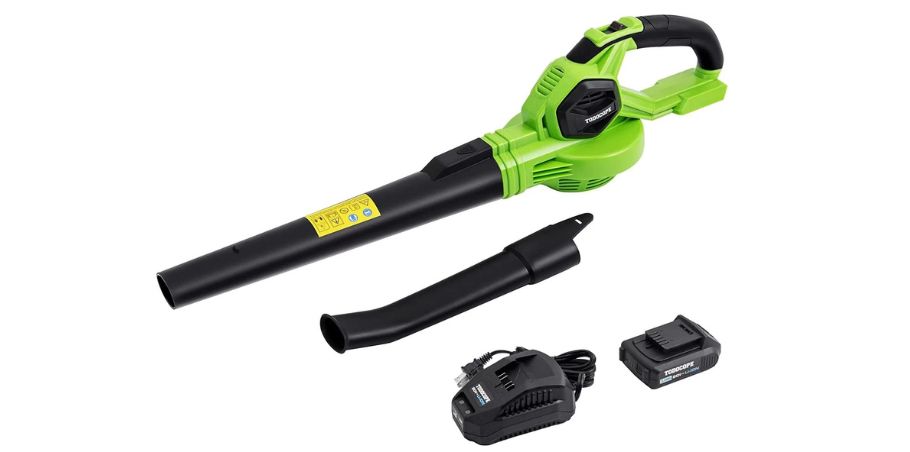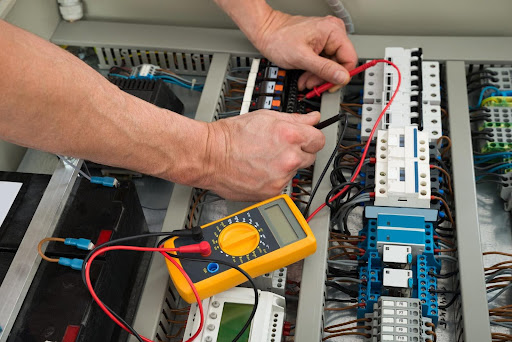Cordless Leaf Blower: The Ultimate Guide for Yard Enthusiasts
When it comes to keeping your yard pristine, a cordless leaf blower is an indispensable tool. Not only do they make clearing leaves and debris easier, but they also offer flexibility and environmental benefits over traditional gas-powered alternatives. Whether you’re a homeowner managing a small yard or tackling a large garden, this guide will help you navigate the world of Cordless Leaf Blower.
Benefits of Using Cordless Leaf Blowers
One of the main advantages of a cordless leaf blower is its portability. Unlike gas-powered blowers that rely on a fuel tank or corded versions tethered to an outlet, cordless blowers run on rechargeable batteries. This allows you to move freely around your yard without restriction. Cordless leaf blower are generally lightweight, making them easy to carry and maneuver. This is especially helpful for users who need to use the blower for extended periods without experiencing strain or fatigue.
Battery Efficiency and Power
Today’s cordless leaf blower boast impressive battery life and power output. Thanks to advancements in lithium-ion battery technology, you can use these tools for longer periods, all while maintaining consistent power levels. Depending on the model, most cordless leaf blowers offer a battery runtime of anywhere from 20 to 60 minutes on a single charge. This is more than enough time to handle small- to medium-sized yards. For larger spaces, an extra battery or quick recharge capability can keep you going. One of the key benefits of using a cordless leaf blower is that it’s far better for the environment compared to gas-powered blowers. Since they don’t rely on fuel, cordless leaf blower produce zero emissions. This not only helps reduce your carbon footprint but also provides a quieter and cleaner solution for yard maintenance.
How Cordless Leaf Blower Work
Cordless leaf blower rely on a rechargeable battery to power a motor. The motor generates airflow, which is then directed out through the blower tube to move leaves, dirt, and other debris. The motor powers an internal fan that rapidly spins, creating high-speed air that exits the tube. The power of the blower is measured in CFM (Cubic Feet per Minute) and MPH (Miles per Hour), two metrics that indicate how much air the blower moves and how fast it moves it.
Airflow Capacity
When comparing cordless blowers, it’s important to understand CFM and MPH. CFM measures the volume of air the blower moves, while MPH measures how fast that air travels. A high CFM is ideal for moving large amounts of leaves, while high MPH helps with directing and controlling the airflow.
Types of Cordless Leaf Blower
These are the most common type of cordless blowers. They are ideal for light- to medium-duty yard work and are typically lighter and more compact than backpack models. Backpack models are more powerful and suitable for larger yards. While they tend to be heavier, the backpack design distributes the weight evenly, making them more comfortable to use for extended periods.
Choosing the Right Cordless Leaf Blower
When it comes to selecting the right cordless leaf blower, there are several factors to consider to ensure you’re making the best choice for your needs. Whether you’re maintaining a small yard or managing a larger property, picking the right model will save you time and effort. Here’s a detailed guide to help you choose the perfect cordless leaf blower.
Factors to Consider
When choosing the right cordless leaf blower, it’s essential to think about factors like the size of your yard, the type of debris you need to clear, and how often you’ll be using the tool.
Yard Size and Maintenance Frequency
For smaller yards, a handheld cordless blower with moderate power is likely sufficient. Larger yards or properties with a lot of trees may require a backpack model with a higher CFM and longer battery life.
Power and Performance
Look for a model with a balance of power (CFM and MPH) and battery life. This ensures you’ll have enough force to clear leaves efficiently without needing frequent recharges.
Battery Capacity and Runtime
Battery runtime can vary significantly between models. Check whether the battery life aligns with the size of your yard and your specific needs.
Popular Cordless Leaf Blower Brands
When shopping for a cordless leaf blower, it’s important to consider the brand as it can often determine the reliability, performance, and customer support you’ll receive. Several brands have established themselves as leaders in the cordless leaf blower market, offering high-quality products with a range of features to suit different needs. Here are some of the most popular cordless leaf blower brands:
Dewalt
Dewalt is known for its rugged and durable cordless tools, and its leaf blowers are no exception. These models typically offer excellent power and long battery life.
Greenworks
Greenworks specializes in environmentally friendly outdoor tools. Their cordless blowers are known for their reliability and efficient battery use.
EGO
EGO’s cordless blowers are often regarded for their superior battery life and powerful performance, making them a favorite among yard care professionals.
Proper Maintenance for Cordless Leaf Blowers
Taking care of your blower’s battery is crucial for extending its lifespan. Keep the battery clean and store it in a dry, cool place when not in use. Avoid letting your battery drain completely before recharging, and remove it from the charger once fully charged to prevent overcharging. After each use, clear out any debris from the blower and ensure it’s stored in a dry area. Regular cleaning will keep the motor and fan in good working condition.
Comparing Cordless vs. Gas-Powered Leaf Blowers
Cordless leaf blowers are much quieter than gas-powered models, making them a more neighborhood-friendly option. Additionally, they produce no harmful emissions. While gas blowers may have a slight edge in power, modern cordless models are closing the gap with strong airflow and longer battery life.
Best Practices for Using Cordless Leaf Blowers
Always wear protective eyewear and hearing protection when using a leaf blower. Be mindful of wind direction and avoid blowing debris towards others. Use your blower in sweeping motions to move leaves into piles for easier collection. Start at one side of the yard and work systematically across. Many people believe cordless blowers lack power compared to gas models. However, modern cordless blowers are highly capable, especially for residential use. While some early models had short battery life, today’s cordless blowers often offer up to an hour of continuous use with high-capacity batteries.
Sustainability and Reduced Carbon Footprint
Cordless leaf blowers help reduce carbon emissions, making them a more sustainable choice for homeowners who care about the environment. While cordless blowers may have a higher upfront cost, they are generally more cost-effective over time due to lower maintenance and fuel costs.
FAQs About Cordless Leaf Blower
How long do the batteries last?
Most batteries last between 20 to 60 minutes, depending on the model and the workload.
Are cordless blowers strong enough for large yards?
Yes, high-end models are more than capable of handling large yards, especially with extended battery life or extra batteries.
Can I use a cordless leaf blower for snow?
Yes, cordless leaf blowers can clear light snow from driveways and sidewalks, though they may not be as effective on heavier snowfalls.
Is maintenance for cordless leaf blowers complicated?
No, they require minimal maintenance. Just clean the blower and battery contacts regularly and store them properly.
Are cordless leaf blowers noisy?
Cordless leaf blowers are generally quieter than gas-powered models, making them more suitable for residential areas.
Conclusion
Cordless leaf blowers have become a go-to tool for homeowners looking for a convenient, environmentally friendly, and powerful way to keep their yards clean. With advancements in battery technology, these devices are no longer limited by short runtimes or lack of power, making them a viable alternative to gas-powered models.
If you gained new insights from this article, explore our blog, Gimkit, for more enlightening content.
Share this content:














Post Comment